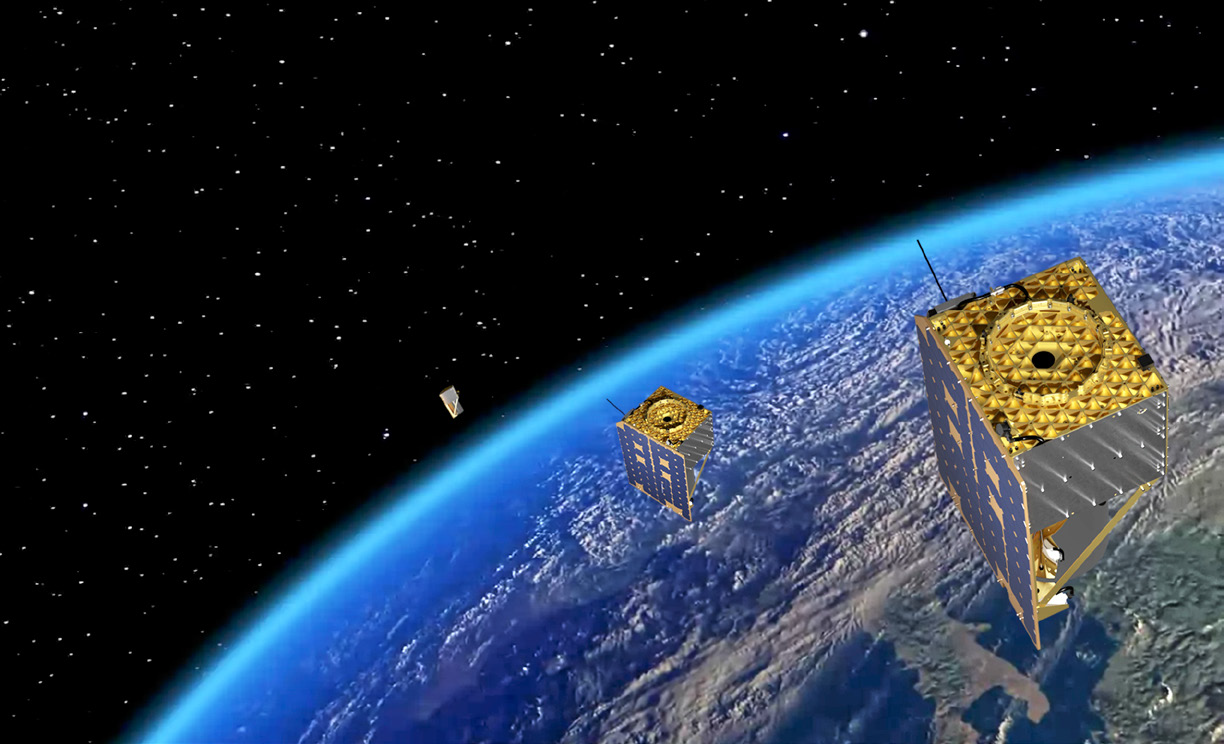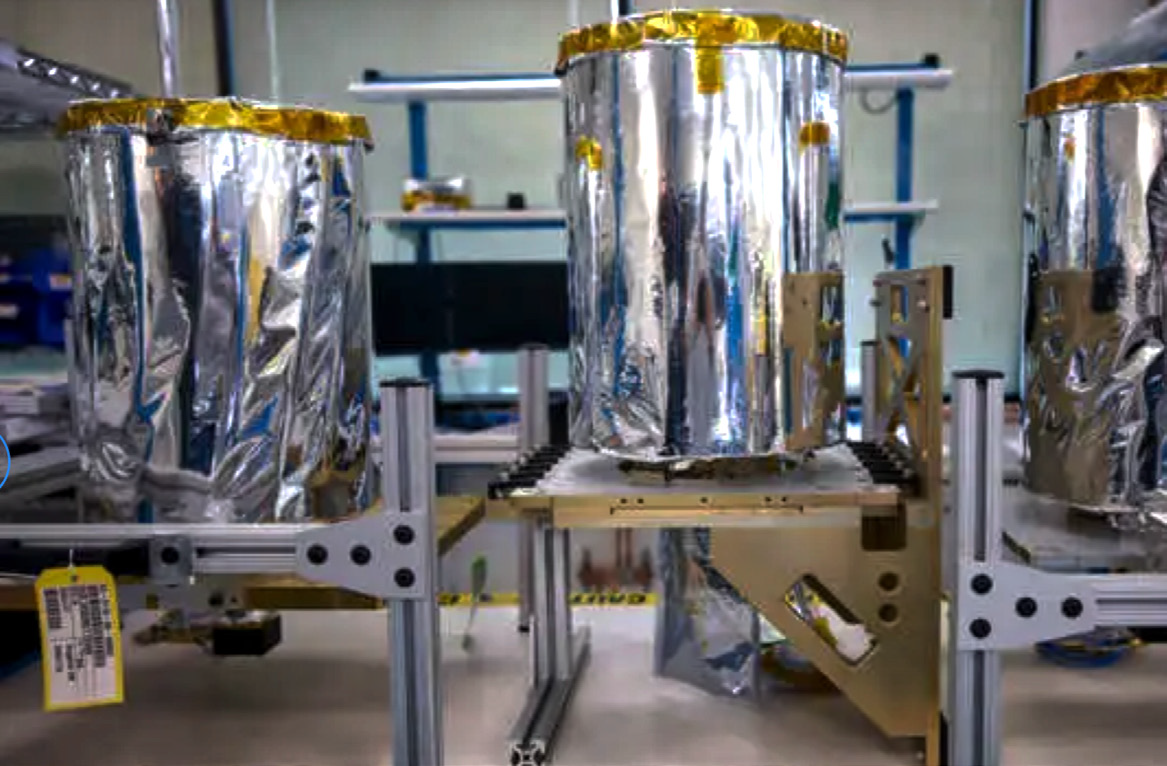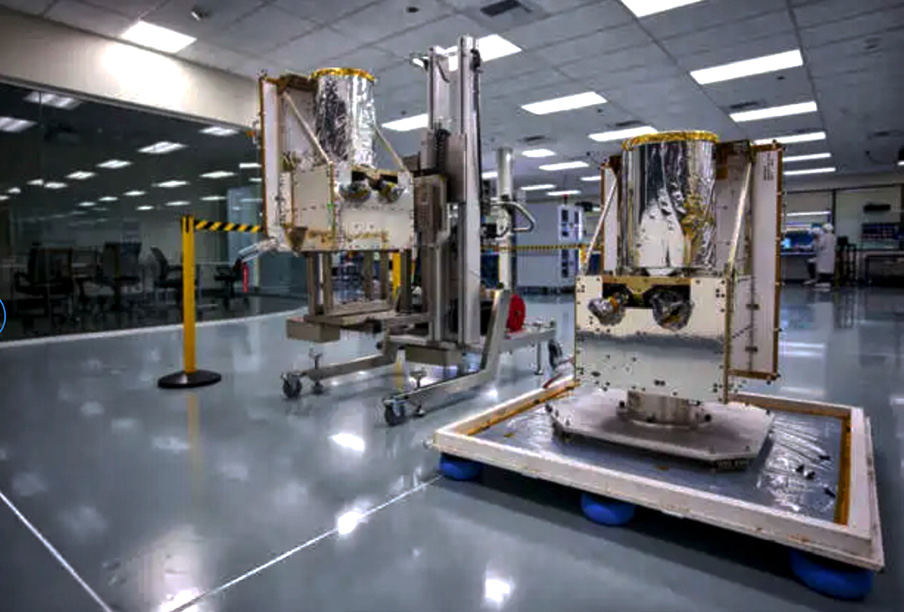Tim Kienberger is the CEO of LeoStella, a small satellite manufacturer based in Tukwila, Washington. Tim has led the company since January 2023. With more than two decades of aerospace and defense industry leadership experience, Tim has background of delivering impactful business results for customers in the advancement of space systems and national defense products. Prior to LeoStella, Tim led advanced technology programs at companies such as L3 Harris and Boeing. Throughout his career, he’s been in roles pushing the boundaries of fast-paced production operations and formulating market strategies for complex, proprietary products and technology solutions.

Good day, Mr. Kienberger. How did you initially become involved in the space industry? What path led you to LeoStella?

Tim Kienberger
Tim Kienberger
Like many in the industry, I was inspired by the moonshot Apollo program and the ability of astronauts and engineering companies to quickly overcome challenges and accomplish amazing scientific feats. I’m excited about the renewed confidence being placed in space exploration to make life better on Earth and for all mankind. We’re a nation of pioneers, explorers, and dreamers -- always will be. One of the best things about my job is contributing to technology advancements, working with and leading a team dedicated to those same aspirations.
I studied physics and engineering at Pacific Lutheran University and went on to earn my master’s degree in applied physics from the University of Washington. I pursued an executive MBA and international master’s degree in management from Purdue Krannert School of Management and TIAS/Nimbas Business School in the Netherlands.
My aerospace career started in advanced aircraft production and led me back to my passion of space. Most recently at Boeing, I led development of advanced space systems for Phantom Works and production of rapid development small spacecraft which revolutionized Department of Defense space missions. I was charged with growing the small satellite business at Boeing, resulting in more than $1 billion in backlog and growing the workforce to three hundred people.
I’m from Washington and have spent much of my career in the Seattle area, which is a hub for aerospace innovation. Tukwila and the neighboring cities are home to many aerospace companies, so moving into the CEO role at LeoStella a year ago was terrific opportunity and natural fit for me.
As the CEO of LeoStella, could you describe your leadership style and how it contributes to the company’s success and adaptability in the satellite industry?
Tim Kienberger
Collaborative, focused. I’m committed to setting clear goals and expectations for how our team can achieve success together. I’m a big proponent of open communications and encourage everyone on our team to speak their mind and not shy from the tough conversations. I’m a firm believer in the power of spirited debate to ensure we are on the correct track.
Soon after I joined LeoStella, I worked with the leadership team to establish clear mission and vision statements that the entire company could align behind.
I felt having those in place early was absolutely critical. I’m fortunate to lead an amazing, dedicated group of people. We have tremendous teamwork at LeoStella and are continually working to improve and deliver consistently high levels of performance for our customers.
I think one thing that sets LeoStella apart from a lot of companies in our industry is we have a tremendous amount of experience throughout our company. You don’t see that at a lot of new space companies.
Our senior leadership team has something like more than 160 years of combined experience from working at Tier 1 and Tier 2 aerospace companies and in government.
Our ability to deliver 19 satellites on-orbit over five years has created an incredible level of experience in our front-line engineers encompassing over 30 years of operations in a short time period. We have a strong bench of talented, mid-level career professionals across our engineering and technical disciplines.
When your team is working on managing different projects for several customers — as we are, having that proven experience helps you overcome uncertainties that can arise when you come up against competing requirements and schedules. Our leadership team is focused on execution and being adaptable and responsive to our customers.
I see my role as doing everything I can to support them and clear obstacles and roadblocks along the way. The one priority we are all focused on headed into 2024 is program execution.

Would you elaborate on the specific challenges that LeoStella is addressing? What is the company’s core mission in the satellite manufacturing and space technology landscape?
Tim Kienberger
LeoStella is focused on delivering advanced satellite solutions rapidly and affordably. We are the small satellite integrators and rely on a strong supply chain of reliable, high-quality sub-system providers to deliver small satellites with high mission success for our commercial customers. We’re an acceptable-risk organization, meaning we adapt manufacturing and procurement processes to meet the mission needs and have been profitable since our founding.
We are a joint venture between a traditional large European aerospace company Thales Alenia Space (TAS) and a U.S. based imagery and intelligence new space services provider in BlackSky Global. What LeoStella provides for our customers are proven satellite bus solutions with the agility and demonstrated performance that’s essential in today’s business environment.
With our focus on satellite manufacturing, we are able to partner with competitors who are after mission solutions. Our goal is to advance the cost and performance of small satellite solutions to make business models profitable for our customers.
Our broad exposure to the international supply chain is where we see opportunities for the industry. The ability to advance technology into rate manufacturing is key to the small satellite industry. I am excited about the explosion of growth that will occur in supply chain through the integration of new technologies, such as nuclear propulsion and edge computing, that will advance the capabilities of small satellites.
In the competitive field of satellite manufacturing, what sets LeoStella apart from other manufacturers? How does the company approach innovation and differentiation in its products and services?
Tim Kienberger
A key differentiator is our manufacturing facility. When LeoStella was established in 2018, we created a green-field fully digital manufacturing facility. Every part we order, every engineering design, every supplier contract, every documentation that goes into manufacturing a satellite is managed electronically. This enables us to achieve a tremendous cost savings in manufacturing.
One capability that really distinguishes us is our co-engineering. We develop a spacecraft that is 70 to 80 percent common across all flight-proven products and missions. The last 20 percent of the spacecraft bus we co-engineer with our customer to maximize their mission operations. This is significant as it leads to higher revenues for our customers.
When we say we work with our customers, we literally mean including them in the front-end design and on the small and large production decisions, so we quickly address discrepancies.
This means collaborating on day-to-day engineering work and in forums such as Slack channels, holding joint meetings and combined workspaces, and frequently having in-person discussions.
Another defining trait is our in-house testing and payload integration capabilities. This gets back to how LeoStella was set up in the beginning.
We have the ability for rapid production and can scale to support production upwards of 40 satellites per year in our 22,000 square foot facility.

We consider ourselves launch-provider agnostic, with the ability to adapt our satellite bus solution to fly on any of the current launch providers.
LeoStella is known for its focus on small satellite manufacturing. How do you see LeoStella’s focus evolving in the next five years?
Tim Kienberger
This year, we’re entering production on our LS-300, the third generation in our small satellite constellation line of products. The LS-300 is being built first for an undisclosed commercial customer. Each LS product generation has doubled the size and payload capabilities of prior generations. We’re also entering into production on our Gen 3 LS-200s for our BlackSky customer. Those satellites will continue to deliver tremendous data-collection capabilities with greater payload and sensor options.
We’re rapidly expanding our product offerings for defense and international customers to include cislunar orbits where we see tremendous growth in the future. We see ourselves expanding from a small satellite manufacturer to a full spacecraft solutions provider that provides not only spacecraft solutions but also ground and launch options.
With the rapid pace of technological advancements, how does LeoStella ensure its adaptability, and what role do you see emerging technologies playing in shaping the company’s future trajectory?
Tim Kienberger
Technology advancements created or made the small satellite industry possible. We work with the supply chain on incorporation of new capabilities and, more importantly, production of these sub-systems. As an example, artificial intelligence (AI) will play a more impactful role in the satellite business. AI already has tremendous influence on how data and imagery is processed and analyzed.

We are excited about the opportunities AI brings to satellites for autonomous operations such as state-of-health or diagnosis of maintenance and repair, change in orbits and navigation, as well as the ability of satellites to self-task and communicate with each other in a constellation to find the optimal route of data to the ground.
This technology advancement will be enabling for the utilization of cislunar space from traffic management to adaptive communications. LeoStella has factored these technologies into our future vision to be a space system provider that enables customer business models in domestic and international markets.
From actionable data for warfighters and special operations to enabling international countries to operate their own constellations, our incorporation of technology in our solutions is vitally important. Currently, LeoStella is operating right at the heart of these exciting times.
leostella.com


